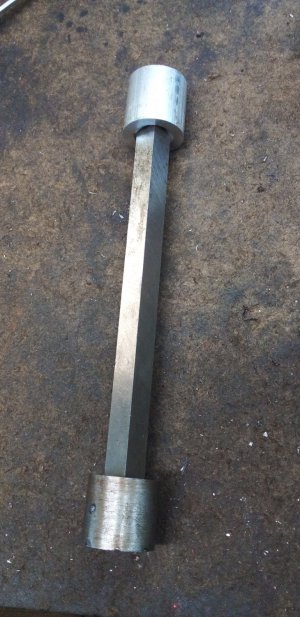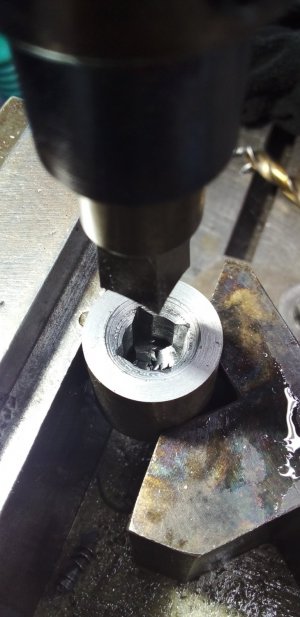- Joined
- Apr 23, 2018
- Messages
- 6,512
I think the dished cutter face is just fine, if not advantageous. The degree of "rock" needed at the cutter face decreases with the number of cutter points, so a square broach needs more freedom than a hex. What is clear to me is that the pivot at the ball needs to allow an angular sweep equal to or greater than the contribution of the shank offset offset. Since it involves faces and offsets, I'd need to draw a sketch or model it to find the exact clearances needed, but the ball pivot needs to cancel the offset and set the point to cut, so the ball needs a little more freedom. The larger the diameter the cutting tool, the more freedom needed- either by increasing the pivot range, or by altering the length of the tool.



